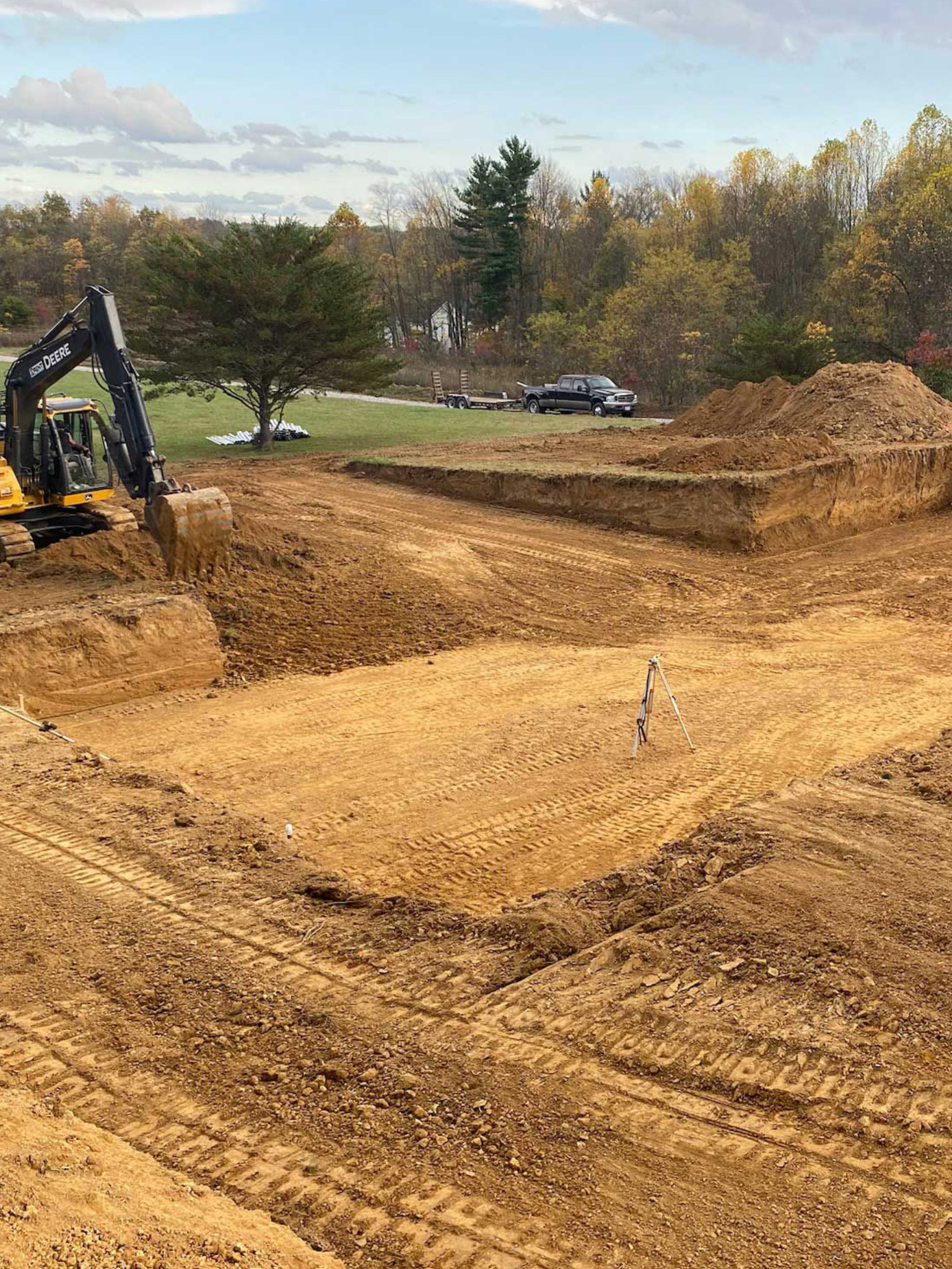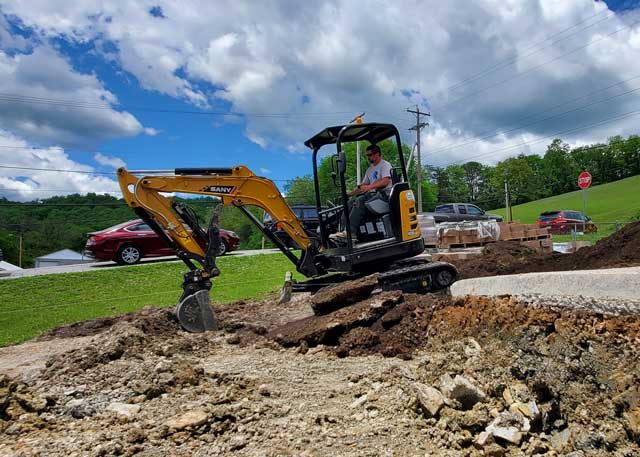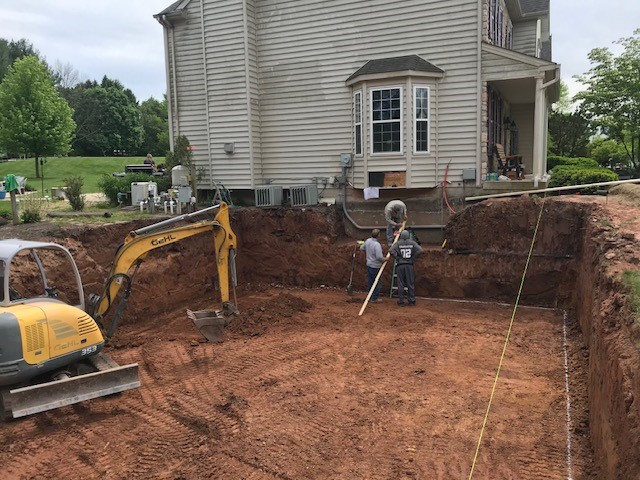Lancaster Trenching - Professional Trenching Solutions in Lancaster, Ohio
Lancaster Trenching - Professional Trenching Solutions in Lancaster, Ohio
Blog Article
Revealing the Art of Excavation: Pro Tips for Safe and Effective Digging
As soil is turned and earth is relocated, the complexities of excavation disclose themselves, requiring a keen understanding of devices, soil structure, safety and security procedures, and ecological factors to consider. The knowledge needed to browse these aspects efficiently can indicate the distinction in between an effective excavation task and a potential disaster.
Relevance of Proper Tools
To make certain the safety and efficiency of any type of excavation job, using the ideal tools is paramount. Excavation jobs differ in range and intricacy, varying from little household landscaping tasks to massive building endeavors.
These versatile machines come in various sizes to fit various job needs. Tiny excavators are perfect for smaller sized jobs, while bigger excavators tackle more comprehensive projects successfully.
Apart from excavators, other critical equipment consists of dump bulldozers, vehicles, and plates. Discard vehicles are important for getting rid of and delivering excavated materials, while plates are used for digging slim and deep trenches. Bulldozers master jobs that need pushing large amounts of dirt or debris. By purchasing the appropriate devices, excavation tasks can be finished safely, promptly, and with precision.
Understanding Dirt Structure
A detailed grasp of dirt composition is basic for performing excavation jobs with accuracy and safety and security. Understanding the various sorts of soil is critical as it directly impacts excavation techniques, tools option, and general job performance. Dirt composition typically includes 4 primary elements: sand, silt, clay, and raw material. Each part has unique buildings that affect how dirt responds to excavation processes.
Silt bits are smaller than sand but larger than clay, offering modest drain and communication. Organic matter, such as decaying plant material, impacts dirt fertility and stability.
Before starting excavation, performing soil examinations to identify its composition and features is vital. This information aids in choosing the ideal tools, executing safety procedures, and developing excavation approaches customized to the specific dirt problems - lancaster trenching. By understanding dirt structure, excavation specialists can enhance job end results while making sure safety and security and adherence to finest techniques
Precaution and Protocols
Comprehending dirt structure is the keystone whereupon safety procedures and methods for excavation tasks are built, guaranteeing the well-being of workers and the success of the endeavor. When it comes to security throughout excavation, there are several crucial measures that need to be implemented to minimize risks and avoid crashes.
Most importantly, before any digging commences, a thorough assessment of the website ought to be performed to recognize any potential risks such as underground energies, unpredictable soil conditions, or nearby structures that can present a risk. It is essential to have a qualified individual look after the excavation procedure to make sure that visit all safety protocols are followed purely.
Additionally, all workers involved in the excavation must be properly trained in risk-free excavating techniques and the appropriate operation of tools. By sticking to these security measures and methods, excavation tasks can be finished effectively and without case.
Reliable Excavation Preparation
When starting an excavation project, thorough planning is necessary to make certain performance, safety, and effective results. Reliable excavation planning entails a number of essential actions that are vital for the smooth implementation of the job. The very first step is to conduct an extensive site assessment to recognize any type of potential threats, such as below ground utilities or unstable dirt conditions. This info is vital for establishing a thorough excavation strategy that includes precaution and risk reduction techniques.
When the site evaluation is full, the following action is to create a clear timeline and schedule for the excavation activities. This consists of determining the series of more tasks, tools needs, and manpower appropriation. Proper scheduling helps avoid delays and makes sure that the task remains on track.

Additionally, interaction among all team members is vital throughout the preparation stage. Clear regulations, routine updates, and efficient sychronisation are necessary for an effective excavation job. By investing time and effort in precise preparation, excavation teams can significantly enhance performance, lessen dangers, and accomplish effective end results.

Taking Care Of Ecological Considerations
With enhancing focus on environmental sustainability in building and construction methods, managing ecological considerations has ended up being an important facet of excavation jobs. Excavation tasks have the prospective to influence the surrounding atmosphere with soil disintegration, sediment runoff, habitat disturbance, and contamination of water sources. To reduce these risks, it is vital to carry out best practices that focus on environmental management.

Moreover, appropriate waste administration is vital to prevent soil and water contamination. Executing procedures for the disposal of harmful products, recycling of waste products, and lessening the use of damaging chemicals can significantly minimize the environmental find out this here effect of excavation tasks. By incorporating these practices right into excavation planning and implementation, building companies can ensure that their tasks are not just risk-free and productive but likewise eco accountable.
Final Thought
In conclusion, mastering the art of excavation calls for a detailed understanding of appropriate equipment, soil make-up, precaution, and effective preparation. By following these standards and thinking about environmental variables, excavations can be carried out safely and successfully. It is critical to prioritize security and efficiency in every excavating job to guarantee successful outcomes.
As dirt is turned and planet is moved, the complexities of excavation disclose themselves, requiring an eager understanding of equipment, dirt make-up, safety methods, and ecological considerations.To make certain the safety and performance of any kind of excavation job, utilizing the ideal equipment is extremely important.An extensive understanding of soil structure is fundamental for performing excavation jobs with precision and safety and security. Comprehending the various kinds of dirt is vital as it straight affects excavation techniques, tools selection, and general task performance. By recognizing soil make-up, excavation specialists can enhance job outcomes while guaranteeing safety and adherence to best methods.
Report this page